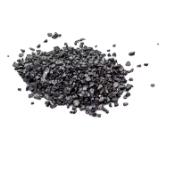Overview of High purity molybdenum niobium alloy target magnetron sputtering target
Niobium, often found in conjunction with tantalum minerals, is primarily extracted as a byproduct of tin and tantalum mining. Its chief ores include pyrochlore and columbite. Once refined, niobium becomes highly versatile, finding application in alloys, superconductors, and various high-tech materials.
Feature of High purity molybdenum niobium alloy target magnetron sputtering target
-
Superior Strength and Lightness: When added to steel in small quantities (typically less than 1%), niobium significantly enhances the strength and toughness of the alloy while reducing its weight, making it ideal for aerospace and automotive applications.
-
Corrosion Resistance: Like tantalum, niobium forms a passive oxide layer that protects it from corrosion, making niobium-based alloys suitable for use in harsh environments.
-
Superconductivity: Niobium exhibits excellent superconducting properties when cooled below its critical temperature of about 9.2 K (-264°C or -443°F). This property makes it the primary material for superconducting magnets used in MRI scanners and particle accelerators.
-
Magnetic Properties: Niobium is paramagnetic at room temperature but becomes strongly diamagnetic when cooled, meaning it repels magnetic fields. This characteristic is exploited in certain specialized applications.
-
Ease of Fabrication: Despite its strength, niobium is easily formed, welded, and machined, facilitating its use in complex engineering designs.

(High purity molybdenum niobium alloy target magnetron sputtering target)
Parameters of High purity molybdenum niobium alloy target magnetron sputtering target
A high purity molybdenum (Mo) and niobium (Nb) alloy magnetron sputtering target typically has the following parameters:
1. Composition: The alloy composition can vary, but a common one is Mo-Nb (e.g., 50:50, 60:40, or 70:30 Mo:Nb), where the percentage refers to weight or atomic percentage, depending on the specific application requirements.
2. Purity: The purity of the alloy should be very high, often 99.99% or better, to ensure minimal contamination and optimal deposition quality.
3. Crystal Structure: Molybdenum and niobium usually form a solid solution, which means they can be alloyed without significant phase separation at the given composition. The alloy’s microstructure will depend on the cooling rate during fabrication.
4. Size and Shape: Targets can come in various sizes and shapes, such as circular, rectangular, or custom shapes, with diameters ranging from a few centimeters to several meters and thicknesses typically between 10mm to 50mm.
5. Material Form: The target is usually made of a refractory metal substrate, like tungsten carbide (WC) or tantalum carbide (TaC), due to their high melting points and low sputtering yield. The alloy is deposited onto this substrate using techniques like electron-beam physical vapor deposition (EBPVD) or arc melting.
6. Sputtering Efficiency: The alloy’s sputtering efficiency, or how well it releases atoms during the sputtering process, depends on factors like its melting point, work function, and surface roughness. Higher purity and proper alloying can enhance sputtering efficiency.
7. Operating Temperature: Magnetron sputtering targets operate at elevated temperatures, often between 800°C to 1500°C, to facilitate the release of atoms for deposition.
8. Magnetron Power: The power applied to the target depends on the desired deposition rate and the material properties. A typical power range for Mo-Nb alloy targets is 50 to 500 W, but this can vary.
9. Vacuum Requirements: The target operates in a high vacuum environment, typically below 10^-5 Torr, to minimize gas collisions and maintain optimal sputtering conditions.
10. Cooling System: An efficient cooling system is necessary to manage the heat generated during sputtering, preventing damage to the target and maintaining stable operation.
These parameters may vary depending on the specific application, such as thin film deposition for semiconductor devices, superconductors, or aerospace components. Consult the manufacturer for exact specifications tailored to your needs.

(High purity molybdenum niobium alloy target magnetron sputtering target)
Company Profile
Metal in China is a trusted global chemical material supplier & manufacturer with over 12-year-experience in providing super high-quality copper and relatives products.
The company has a professional technical department and Quality Supervision Department, a well-equipped laboratory, and equipped with advanced testing equipment and after-sales customer service center.
If you are looking for high-quality metal powder and relative products, please feel free to contact us or click on the needed products to send an inquiry.
Payment Methods
L/C, T/T, Western Union, Paypal, Credit Card etc.
Shipment
It could be shipped by sea, by air, or by reveal ASAP as soon as repayment receipt.
FAQ

(High purity molybdenum niobium alloy target magnetron sputtering target)





